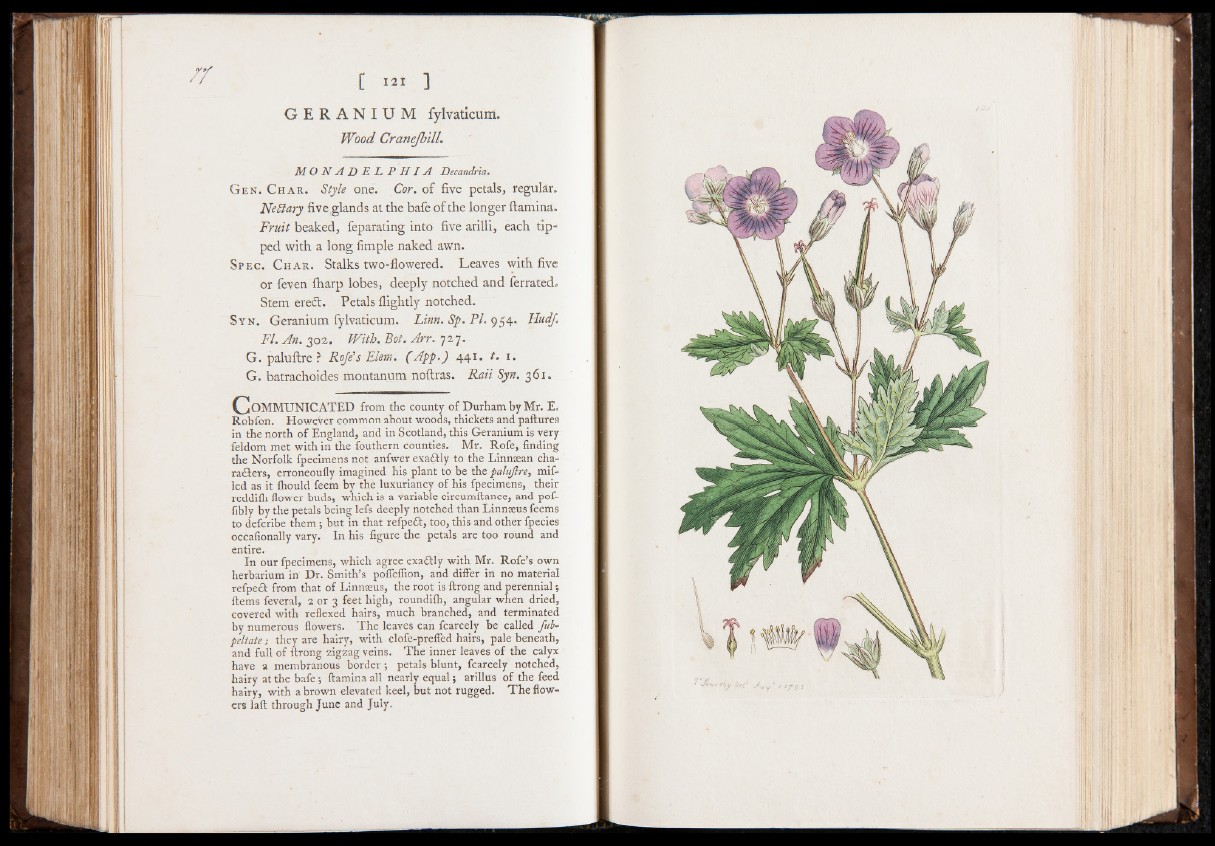
<yrS
G E R A N I UM fylvaticum.
Wood Cranejbill.
M O N A D E L P H I A Decandria.
Gen. Char. Style one. Cor. of five petals, regular.
Neilary five,glands at the bafe o f the longer ftamina.
Fruit beaked, feparating into five arilli, each tipped
with a long Ample naked awn.
Spec. Char. Stalks two-flowered. Leaves with five
or feven fharp lobes, deeply notched and ferrated.
Stem erect. Petals flightly notched.
Syn. Geranium fylvaticum. Linn. Sp. PI. 954- HudJ.
FI. An. 302. With. Bot. Arr. 727.
G. paluftre? RoJe’sElem. (A p p .) 441. t. 1.
G. batrachoides montanum noftras. Rail Syn. 361.
C o m m u n ic a t e d from the county of Durham by Mr. E.
Robfon. However common about woods, thickets and paftures
in the north of England, and in Scotland, this Geranium is very
feldom met with in the fouthern counties. Mr. Rofe, finding
the Norfolk fpecimens not anfwer exaftly to the Linnsean characters,
erroneoufly imagined his plant to be the paluftre, mif-
led as it Ihould feem by the luxuriancy of his fpecimens, their
reddilh flower buds, which is a variable circumftance, and pof-
fibly by the petals being lefs deeply notched than Linnseus feems
to deferibe them; but in that refpeft, too, this and other fpecies
occafionally vary. In his figure the petals are too round and
entire.
In our fpecimens, which agree exactly with Mr. Rofe’s own
herbarium in Dr. Smith’s pofleflion, and differ in no material
refpeft from that of Linnseus, the root is ftrong and perennial;
Hems feveral, 2 or 3 feet high, roundifh, angular when dried,
covered with reflexed hairs, much branched, and terminated
by numerous flowers. The leaves can fcarcely be called fub-
peltate; they are hairy, with clofe-prefied hairs, pale beneath,
and full of ftrong zigzag veins. The inner leaves of the calyx
have a membranous border; petals blunt, fcarcely notched,
hairy at the bafe; ftamina all nearly equal; arillus of the feed
hairy, with a brown elevated keel, but not rugged. The flow-'
ers laft through June and July.